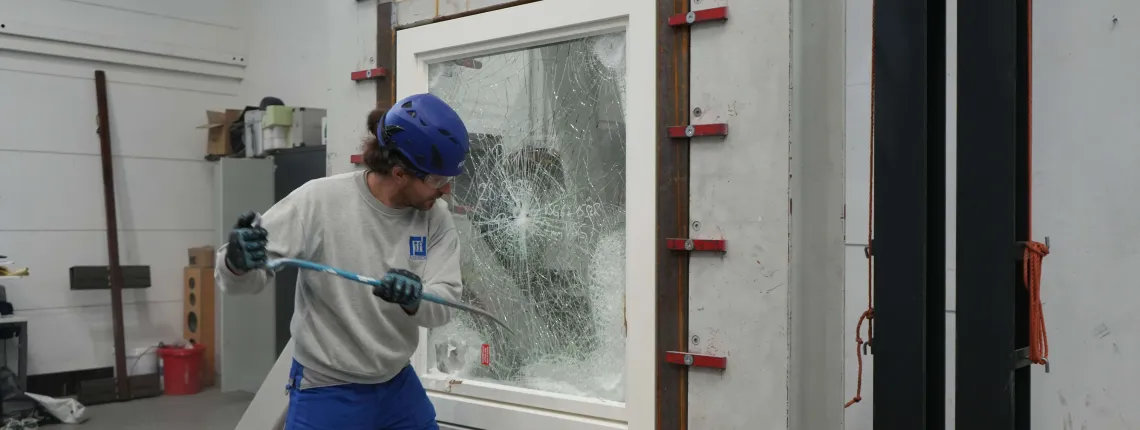Vandalism Directive for the German Market
Flamatt, September 2025

Date:
Protection Against Spontaneous Property Damage in Public Spaces
In response to increasing destruction caused by violent demonstrators, the in Germany based institute ift Rosenheim published Directive EI-06/1 “Vandalism-Resistant Building Components and Installations – Requirements and Test Methods” in January 2025 for the German market. Ulrich Hermens, Technology and Product Developer at Vetrotech Saint-Gobain, was one of the contributors involved in drafting the regulation.
Mr. Hermens, why did ift and an expert group develop a vandalism directive in the first place?
We realized that existing national and international standards for burglary resistance in façades, windows, doors, and gates do not apply to spontaneous acts of destruction caused by vandalism, such as occupation, damage, looting, or arson of buildings or building parts. Based on existing standards, we needed to define basic and additional classes for vandalism-resistant components. The expert group, all based in Germany, included not only testing professionals but also representatives from the police, window manufacturers, building envelope system providers, the Central Council of Jews, and high-security glass manufacturers.
What is the fundamental difference between a “classic” burglar and a so-called vandal?
Unlike burglars, who aim to remain undetected, act quietly, and flee the scene quickly, so-called vandals, violent demonstrators within otherwise peaceful protests, are often unconcerned about being identified, filmed, or apprehended, even in the presence of heavy police forces. They commit spontaneous acts of violence against objects and buildings using manhole covers, iron rods, paving stones, signs, battering rams, and even Molotov cocktails.
From your perspective as a high-security glass manufacturer, what are the key points of the new directive?
Unlike a legally binding standard, a directive is a guideline or recommendation to regulate or standardize specific procedures. The ift Directive EI-06/1 is industry-specific and outlines testing procedures and requirements for classifying components based on their resistance to vandalism. This allows vandalism attacks to be more clearly categorized. For high-security glass manufacturers, the directive serves as a guide for developing vandalism-resistant products and advising clients who may be affected by such incidents.
Which customer groups can benefit from this directive as a consulting tool?
It’s about protecting businesses and the people inside buildings during violent demonstrations. We can initially advise business owners only on the glass product and make recommendations based on the directive’s classification tables. However, the entire system must be tested, meaning frame, wall structure, masonry, locking systems, etc. For example, is a high-end electronics store located on a quiet side street or in a prominent pedestrian zone of a major city? This determines the likely perpetrator profile and potential damage level. A store with large display windows in a busy pedestrian zone is far more vulnerable to vandalism than one in a side street. If the likelihood of a violent mob throwing incendiary devices is high, the building component must be resistant to firebombs. Ultimately, the business owner decides which product to install. It’s a cost-benefit decision between product price and potential damage repair costs.
Have security glass manufacturers already developed vandalism-resistant products?
We can’t develop or test vandalism-resistant glass in isolation, as the entire system must be tested, not just the glass. That means we always work with frame manufacturers and specialists to develop a system-compatible glass solution. We’ve already received initial inquiries from customers. The ift directive EI-06/1 is definitely helpful both for consulting and for future product development of complete systems.
Could the directive also be relevant beyond Germany?
Absolutely. The directive has the potential to become not only a German but even a European standard. Vandalism is on the rise not just in Germany but globally, and current standards do not adequately address these types of spontaneous and violent attacks. That’s precisely why the directive was created, to fill a gap in existing regulations and provide a practical framework for testing and classification. It could serve as a model for other countries facing similar challenges.
